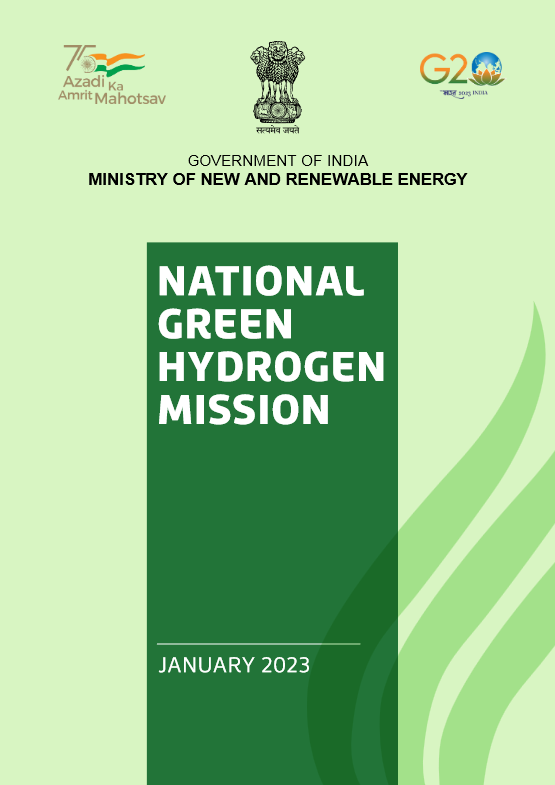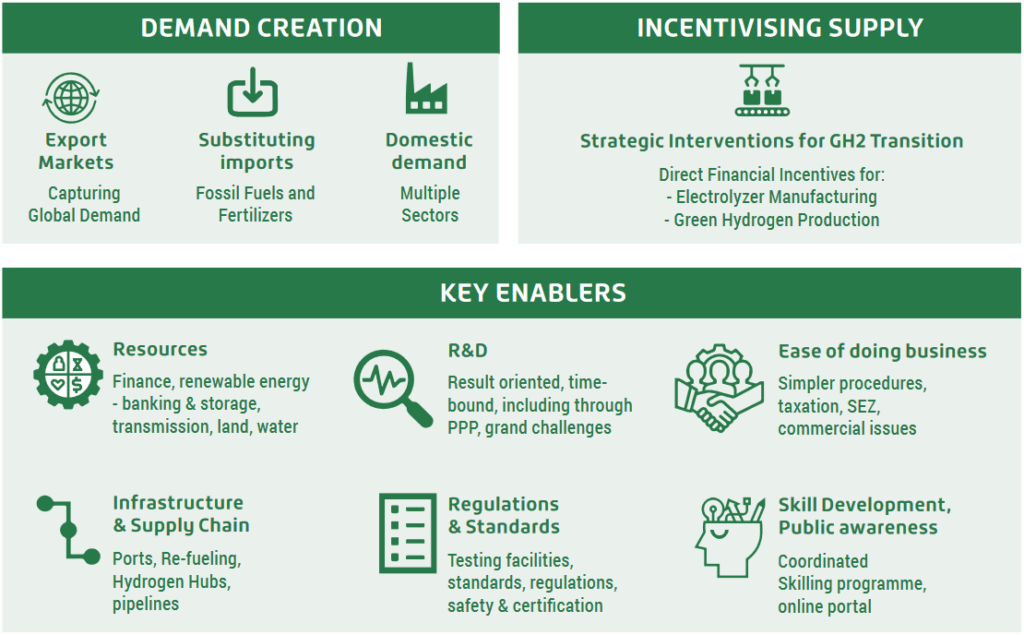India sets renewable milestones for shipping, fertiliser sectors
By Julian Atchison on February 20, 2023

India’s National Cabinet has approved an updated version of the National Green Hydrogen Mission. A total of $2.4 billion in funding for the Mission is included in the national budget, around ninety percent of which will go towards the Strategic Interventions for Green Hydrogen Transition Programme (SIGHT) program: government subsidies for both the domestic manufacturing of electrolysers & domestic production of electrolytic hydrogen using renewable energy. A national production target of 5 million tonnes of renewable hydrogen per year by 2030 is complemented by a new target for the roll-out of renewable energy generation: 125 GW of new capacity added to India’s grid by 2030. The Mission was first launched in February 2022, with India’s Ministry of New and Renewable Energy releasing an updated version of the roadmap document last month (access the pdf).
Domestic fertiliser production, ammonia bunkering
India imports 10 million tonnes of urea, 5 million tonnes of DAP and 3 million tonnes of ammonia each year. The government seeks to fast-track the development of four fertiliser manufacturing plants (two for urea, two for DAP) based on electrolytic hydrogen & ammonia, with a complete replacement of all ammonia-based fertiliser imports to be achieved by 2034-5. A competitive bidding process for these new plants is set to open this year or next, with construction on the successful bids to begin in 2024-5.
On the maritime front, the Shipping Corporation of India will oversee the retrofit of two vessels to run on hydrogen or derivatives by 2027. State-owned oil & gas enterprises will be required to charter at least one such vessel by the same date. Bunkering of ammonia fuel and refueling facilities will be established at one port by 2025, and then in all major Indian ports by 2035.
Policy levers

To encourage domestic demand, a “minimum share of consumption” for electrolytic hydrogen and its derivatives will be set at a later date for relevant industries (such as refining), with the percentage share to be reassessed annually. Measures to unlock the flow of renewable electrons throughout India’s national grid were unveiled in February last year. As well as the above-mentioned government subsidies, the updated version also includes commitments to:
- ensure access to low-cost project finance via a number of schemes.
- a time-bound approvals process for pilot and demonstration projects.
- “building a standards and regulatory framework [to enable] the Hydrogen ecosystem”, a process to be finished by 2023-4.
- a public-private R&D program administered in conjunction with the Indian Council for Scientific and Industrial Research.
- and programs for skills & workforce development.
Project Features heads to India
Join us on March 20, 4PM Indian Standard Time for our next episode of Ammonia Project Features. We unpack the key developments in India (including the above), and consider what next steps are required to seize the renewable opportunity. Syed Hussain Naqvi (ACME Group), Amrit Singh Deo (India Hydrogen Alliance) & Richard Nayak-Luke (University College London) will be joined in conversation by AEA Technology Manager Kevin Rouwenhorst: register here to join the discussion.